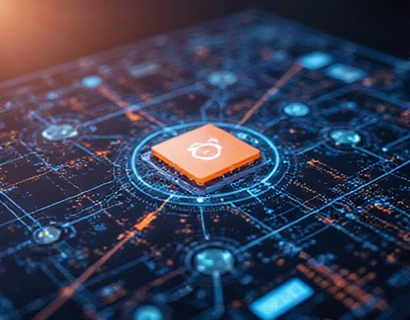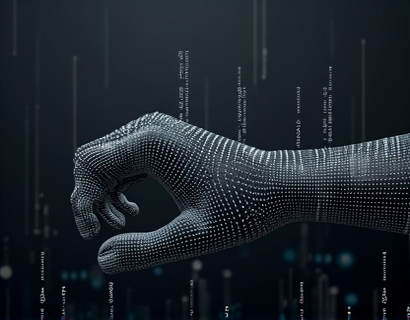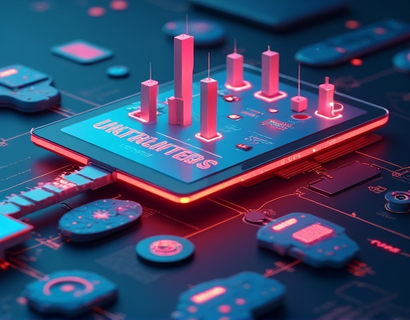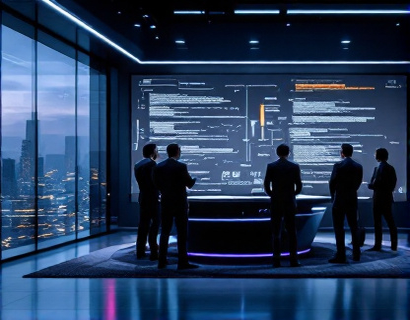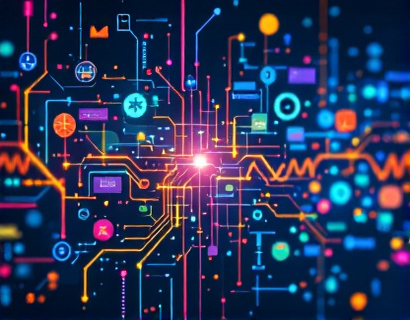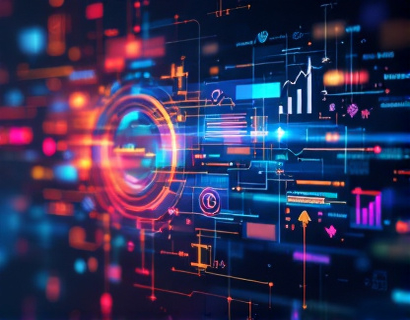Revolutionizing Digital Experiences: The Synergy of Crypto and AI
The intersection of cryptocurrency and artificial intelligence (AI) is ushering in a new era of digital innovation, transforming how we interact with technology and each other. This fusion is not just a technological curiosity but a powerful force reshaping industries and redefining user experiences. As tech professionals and early adopters, understanding the dynamics and potential of this synergy is crucial for staying ahead in the rapidly evolving digital landscape.
Understanding the Basics: Crypto and AI
To fully appreciate the impact of crypto and AI, it's essential to grasp the fundamentals of each technology. Cryptocurrency, a digital or virtual currency secured by cryptography, operates on a decentralized blockchain network. This decentralization ensures transparency, security, and reduces the need for intermediaries. On the other hand, AI refers to the simulation of human intelligence processes by machines, particularly computer systems. These processes include learning (the acquisition of information and rules for using it), reasoning (using rules to reach approximate or definite conclusions), and self-correction.
The Convergence Point: Blockchain and AI
The convergence of blockchain and AI creates a powerful synergy. Blockchain's inherent properties, such as immutability, transparency, and decentralization, complement AI's capabilities in data processing, pattern recognition, and decision-making. This combination can lead to more secure, efficient, and intelligent digital systems. For instance, AI can enhance the analysis of blockchain data, improving predictive analytics and fraud detection, while blockchain can provide a secure and transparent environment for AI models to operate and share data.
Enhanced Security through AI and Blockchain
One of the most significant benefits of combining AI and blockchain is the enhancement of security measures. AI algorithms can monitor blockchain networks in real-time, detecting anomalies and potential threats with high accuracy. This proactive approach to security is vital in an era where cyber threats are becoming increasingly sophisticated. Moreover, AI can optimize the consensus mechanisms used in blockchain, making them more efficient and less energy-intensive. For example, machine learning models can predict network conditions and adjust parameters to maintain optimal performance and security.
Smart Contracts and AI: A Powerful Duo
Smart contracts, self-executing contracts with the terms directly written into code, are a cornerstone of blockchain technology. When integrated with AI, smart contracts become even more powerful. AI can analyze complex scenarios and dynamically adjust the terms of smart contracts based on real-time data and conditions. This adaptability ensures that contracts are not only executed efficiently but also remain relevant and fair. For instance, in supply chain management, AI-driven smart contracts can automatically adjust payment terms based on delivery times and conditions, reducing disputes and increasing trust among parties.
Optimizing Data Management with AI and Blockchain
Data management is a critical aspect of both AI and blockchain technologies. AI requires vast amounts of data to learn and improve, while blockchain needs robust data storage and management systems. The integration of AI in blockchain data management can lead to more efficient and intelligent data handling. AI algorithms can optimize data storage, reduce redundancy, and enhance data retrieval processes. Additionally, AI can help in ensuring data privacy and compliance by anonymizing sensitive information and ensuring that data usage adheres to regulatory standards.
Decentralized AI: A New Paradigm
The concept of decentralized AI, facilitated by blockchain, is gaining traction. In a decentralized AI ecosystem, AI models and data are distributed across a network of nodes, eliminating the need for centralized servers. This approach not only enhances security and privacy but also democratizes access to AI technologies. Users can contribute their computational resources and data to the network, earning rewards in cryptocurrency. This collaborative model fosters innovation and ensures that AI advancements benefit a broader audience, rather than being monopolized by a few large corporations.
Use Cases: Real-World Applications of Crypto and AI
The potential applications of combining crypto and AI are vast and varied, spanning multiple industries. Here are some notable use cases that highlight the transformative impact of this synergy:
- Finance: Decentralized finance (DeFi) platforms leverage AI to enhance trading algorithms, risk management, and fraud detection. AI-driven smart contracts can automate complex financial transactions, reducing costs and increasing efficiency.
- Healthcare: AI-powered diagnostic tools can analyze medical data stored on blockchain networks, ensuring data integrity and patient privacy. Smart contracts can manage patient consent and data sharing, streamlining the healthcare process.
- Supply Chain: AI can optimize supply chain operations by predicting demand, managing inventory, and detecting bottlenecks. Blockchain ensures transparency and traceability, while AI enhances the accuracy of these processes.
- Real Estate: AI can analyze market trends and property data to provide insights for investors. Blockchain can facilitate secure and transparent property transactions, reducing fraud and increasing trust.
These use cases demonstrate how the combination of crypto and AI can drive innovation and efficiency across various sectors, offering solutions that are both advanced and practical.
Challenges and Considerations
While the potential of crypto and AI is immense, there are several challenges and considerations that need to be addressed:
Regulatory Hurdles
The regulatory landscape for both crypto and AI is still evolving. Ensuring compliance with existing laws and regulations while advocating for supportive frameworks is crucial. Organizations must navigate the complexities of data privacy, security standards, and cross-border regulations to fully leverage the benefits of this technology combination.
Technical Complexity
The integration of AI and blockchain involves complex technical challenges. Developing scalable and efficient systems that can handle large volumes of data and transactions requires expertise in both domains. Continuous research and development are necessary to overcome these technical hurdles and create robust solutions.
Ethical Considerations
Ethics play a vital role in the development and deployment of AI and blockchain technologies. Ensuring that AI models are fair, transparent, and free from bias is essential. Additionally, the use of blockchain for decentralized systems must respect user privacy and consent, avoiding potential misuse or abuse of technology.
Future Outlook: The Road Ahead
The future of crypto and AI is bright, with numerous opportunities for growth and innovation. As technology continues to advance, we can expect more sophisticated applications and broader adoption across industries. Here are some key trends to watch:
Increased Adoption
As the benefits of combining crypto and AI become more apparent, we can anticipate wider adoption in various sectors. Businesses and organizations will increasingly turn to these technologies to gain a competitive edge, drive efficiency, and enhance user experiences.
Advancements in AI and Blockchain
Ongoing research in AI and blockchain will lead to more powerful and versatile tools. Advancements in machine learning, quantum computing, and blockchain scalability will further enhance the capabilities of this synergy, opening up new possibilities for innovation.
Ecosystem Development
The development of a robust ecosystem around crypto and AI is essential for sustained growth. This includes the creation of developer communities, standardized protocols, and collaborative platforms that foster innovation and knowledge sharing.
In conclusion, the fusion of cryptocurrency and artificial intelligence is revolutionizing digital experiences, offering sophisticated solutions that enhance security, efficiency, and user engagement. As tech professionals and early adopters, embracing this synergy and staying informed about its developments will be key to thriving in the digital age.



